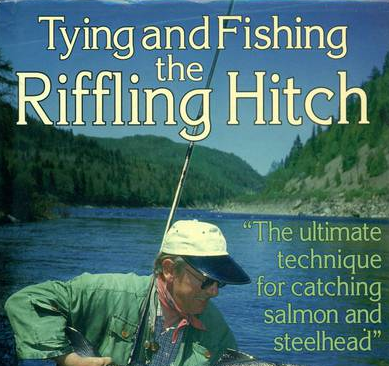Paul Smith writes in the Telegram about what made Art Lee so special.
Art Lee certainly lived the life, that’s my terminology for making a living doing what you love to do. It truly is the way to go. But it isn’t very often an easy stunt to pull off, unless you are a member of the Rolling Stones or some such thing. Art Lee joined the marines out of college and ended up as a military photographer. He leaned to fly fish, had a god given gift for putting words on paper and shazam! The three melded into one whole career.
In the 1960s Art Lee began writing for Fly Fisherman. At that time it was the only show in town with regard to fly fishing media. Art had a magical knack for explaining the finest, slickest, and most esoteric details to aspiring anglers. At a time when most folks were matching the hatch for trout, Art still emphasized presentation, reading water, and skill with the stick, over total dependence on one’s fly.
LINK (via: The Telegram)







Yup. That’s a little gem of a book that I have in my “library” (which, for people living in the real world, is two or three dozen or so, very large, heavy-duty cardboard boxes filled with all sorts of good books that are stacked in two very large cupboards – no wood panels and fine shelving with a very pretty, studious, extremely friendly gal in stylish reading glasses working as its curator, you understand).
First time I saw the Hitch in use was on the Langa River in Iceland in the early 1980s, when a very fine, widely fished British flyfisher, Alan Mann of own motor-racing team, small southern British airport and helicopter fleet fame, whom I had bumped into whilst checking into (with a rod tube) a flight to Iceland where I was going trouting (“Come and have day with me after salmon on my river, Paul.”), showed me how riffling was done on a fast, popply run on the river, and soon had a fish of about ten pounds repeatedly leaping into the air / head and tailing / fairly foaming the river surface in its efforts to nail a hitched, sparse hairwing pattern tied on a fine wire, low-water double. Alan hooked and landed the fish later, after coming back to it after giving it an hour’s rest.
Hmm…. [I thought to myself] Better look and learn today, to hell with a few hours hungry and probably unsuccessful fishing.
A decade later, the great sea-trout of southern Patagonia and Tierra del Fuego sometimes did the same as that Icelandic salmon, and would pretty well rip the rod from your hand when they really meant business.
Two Lees and an Alan were responsible.